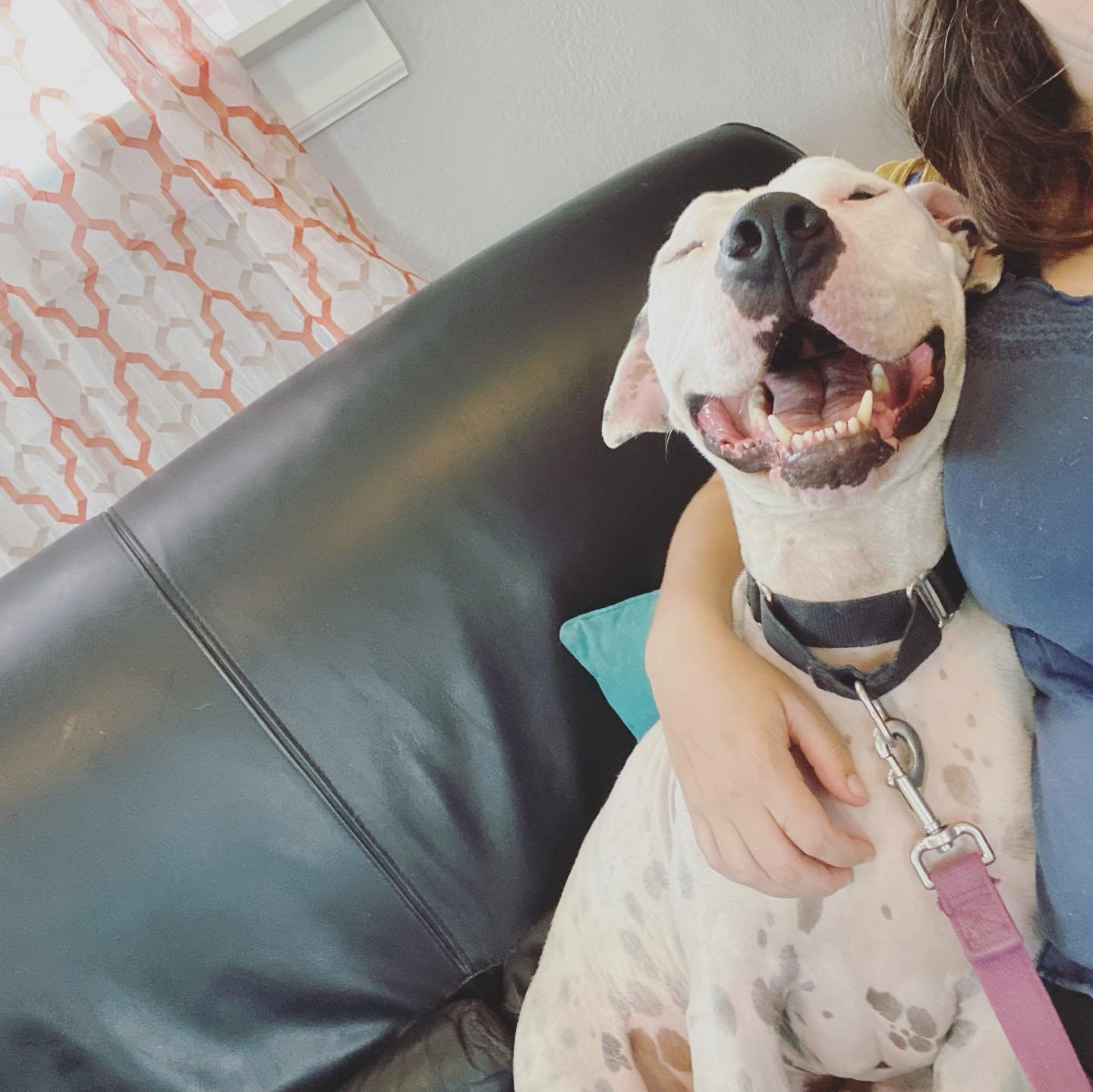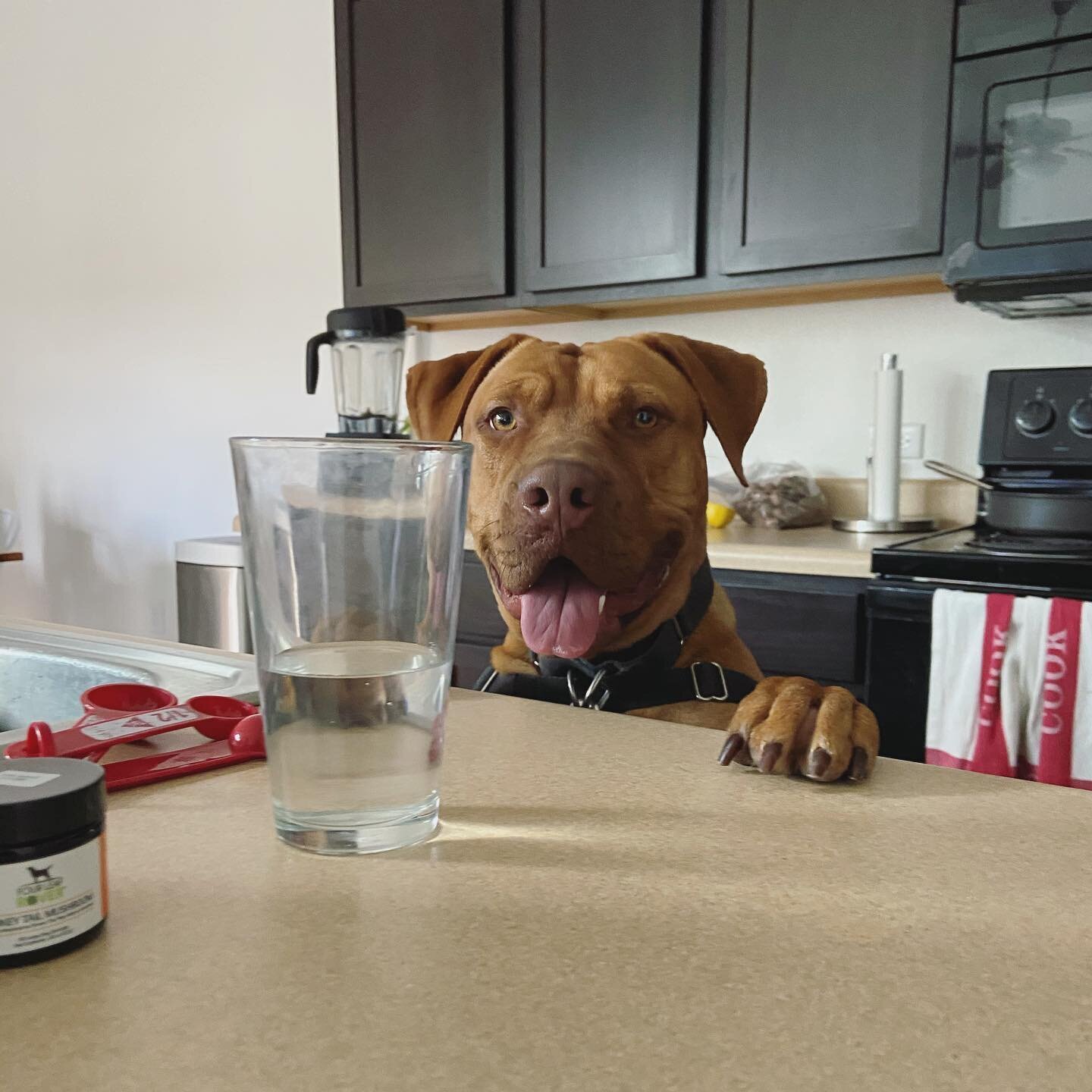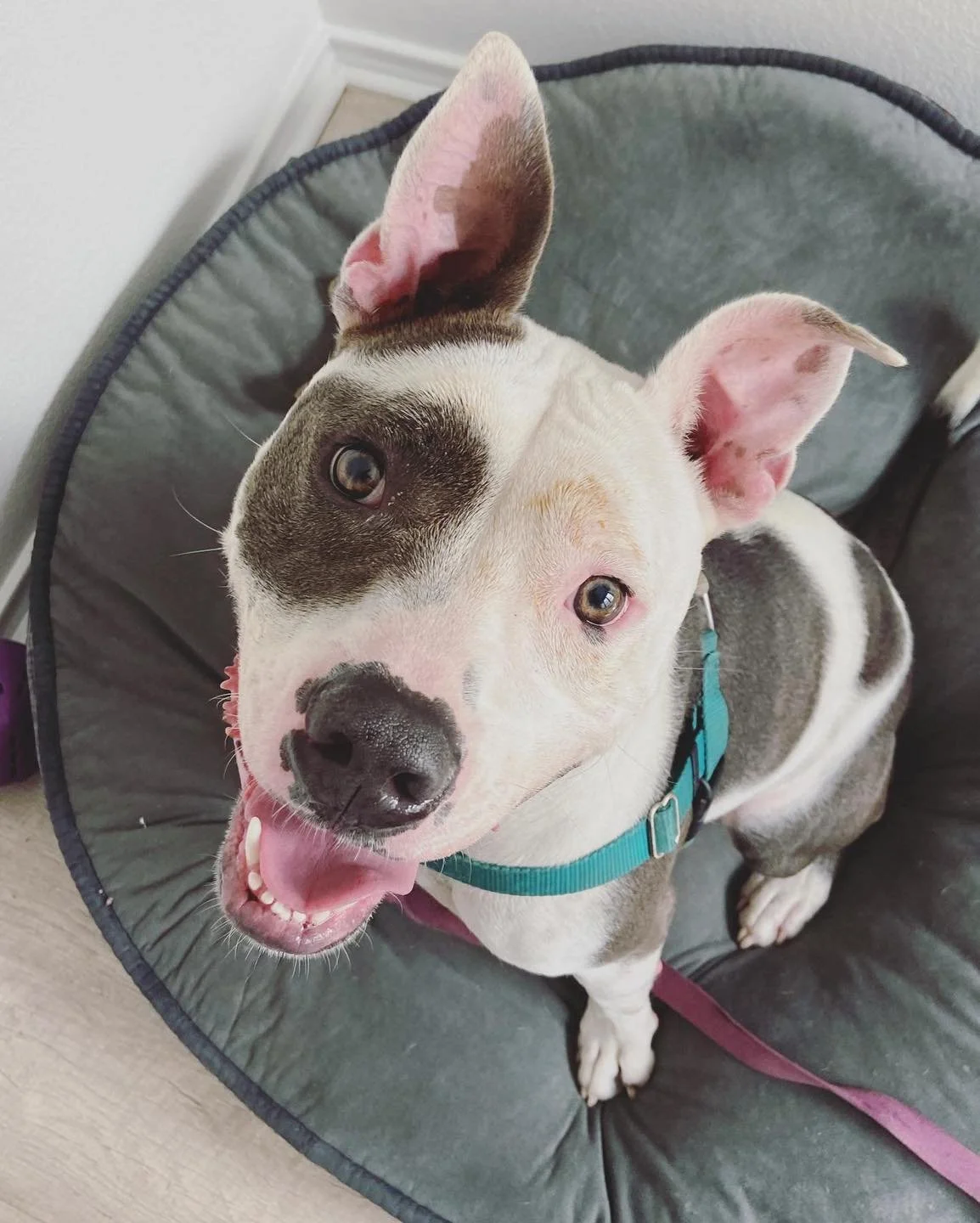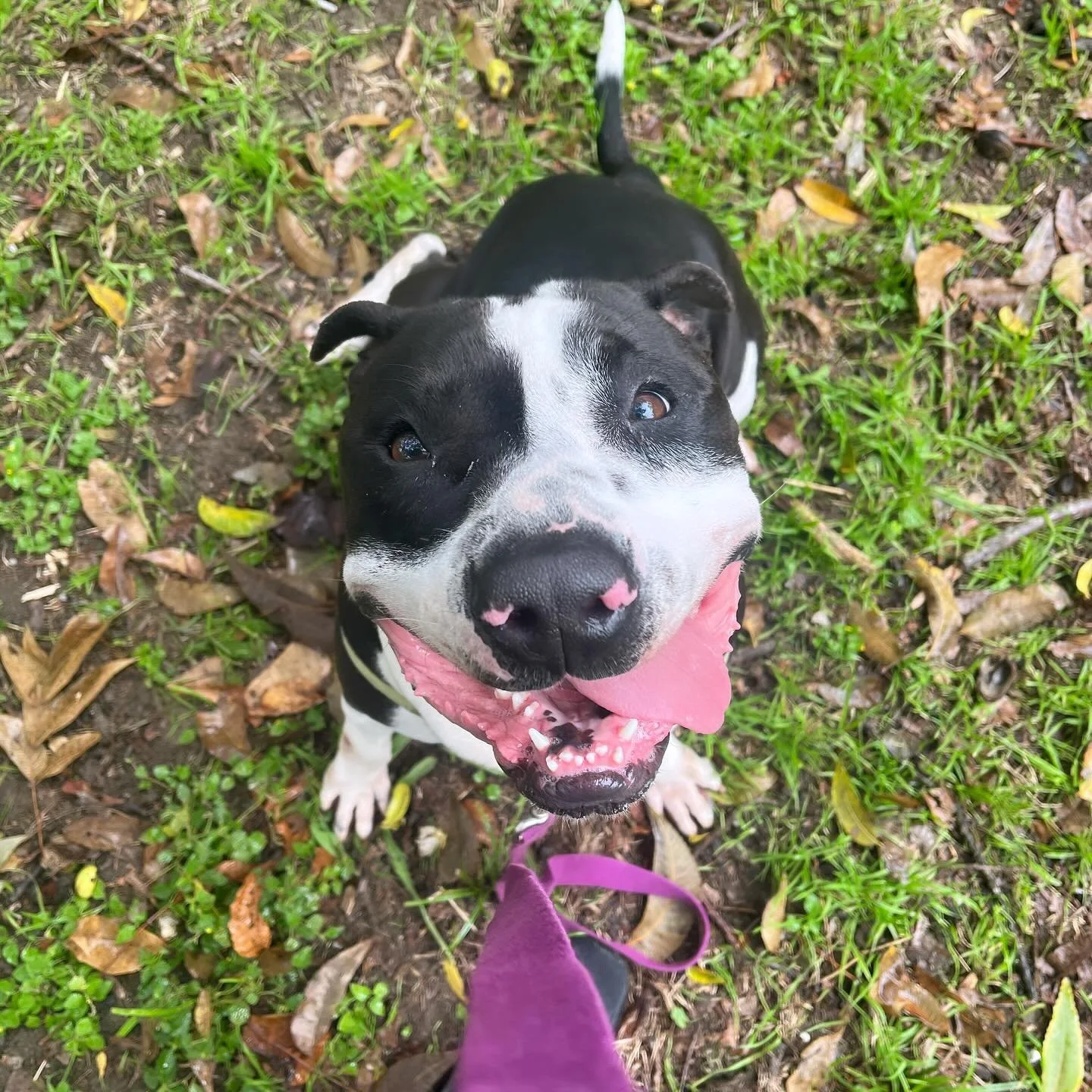I Need To Return This Dog
For many of us, those seem like words we'd never say. And yet, they are said to shelters and rescue groups on a daily basis. We wanted to explore this issue from a dog behavior perspective. Specifically, the most common behavior related reasons for dog returns we've seen repeatedly throughout the years. While there definitely are behavior challenges and mismatches that make a dog genuinely incompatible with a given home or much more likely to thrive elsewhere, many of the most common behavior related reasons for returning a dog are not only things we can improve, but sometimes things that could be avoided in the first place with better information, more effective matchmaking, and the right supportive strategies in place.
BEFORE GETTING A DOG
In a perfect world, you’d be reading this post before you bring home a dog. We hope that you are! In that case, head over to our post on exactly that topic to think through whether this is the right time to bring home a dog, what that might look like, and how to make the right match. Already brought home a dog? That post may still help with perspective!
TLDR yet another post? Our single biggest tip is work with a shelter/rescue to choose a dog who seems like a good personality, energy level, and behavioral match for your household and FOSTER FIRST to ensure it is indeed a good fit. Adopt when it’s right.
THE TRANSITION PERIOD
You load your newly adopted pup into the car and bring them home. You know right away that you are this dog's person and that they are home to stay. The dog, on the other hand, has no idea. You are just the latest person to change their routine and shake up their sense of stability and security. They don't know they get to stay with you and they are very likely stressing out and quite possibly acting out. The less stability this dog had before coming home with you, the more true this is.
We also may have had a few days or even weeks where the dog was tired, not feeling well, or a bit shut down and inhibiting his or her behavior. Now that your new pup is rested and/or feeling a little more comfortable, those wilder transition period behaviors may feel like they came out of nowhere.
Or, maybe you bring your new pup home and even though everything is going reasonably okay, you immediately start thinking, what on earth have I done? That initial panic and uncertainty is very normal, for people and pups alike.
Adding a dog to your household is a huge decision and the transition period is first on this list for good reason. So many wonderful dogs are returned before they have even had time to show their true personalities, bond with their new humans, or feel comfortable in their new environments.
So how do you tell your newly adopted best friend that they are safe and loved and that this is their home? You show them through your actions. Your dog's first 30ish days in your home should be very low pressure and filled with routine, consistency, supportive strategies, and an abundance of patience. The more consistent you are with the right approach and supportive strategies, the more quickly your dog will begin to build a sense of security and settle in as an integrated part of your life.
Fortunately, there is a ton of support available to help you and your dog through the transition period, from free resources, to professional trainers and, often, from the organization through which you adopted. If you adopted here in Austin, check out the Behavior Assistance Program offered by Friends of Austin Animal Center and Every Dog Training and Behavior’s financial assistance program.
CUTE PUPPY BECOMES A NAUGHTY TEENAGER
A lot of dogs arriving at shelters are adolescents and young adults. First, anyone familiar with what humans are like during that developmental stage should not be surprised that adolescent and young adult dogs can be a handful. All those hilarious stories of that crazy, ridiculous thing someone's dog did? There is a good chance they did it between the ages of 7 months to 3 years old . Adolescent and young adult dogs are bursting with a mix of energy, curiosity, and still developing brains and bodies that can make them seem like canine tornadoes without the right supports in place.
So, what to do with puppies to set them up for success and what to do with adolescent and young adult dogs to keep you from pulling your hair out? For puppies, training and appropriate socialization are a MUST. It's non-negotiable.
There are a plethora of available puppy classes, as well as excellent books on getting your puppy started on the right paw. And as for that adolescent dog, this is the perfect time to really develop your relationship with your best friend. Get busy. Invest in puzzle toys, sign up for a fun class or extracurricular activity with your dog like group training, agility, group hiking, nose work, or a good old basics class. Hit the backyard for a game of fetch. Go big on enrichment.
Most importantly, remember to keep your sense of humor and to reach out for help when you need it. And remember that while it may be longer than you expected, adolescence and young adulthood don’t last forever.
LEASH REACTIVITY
“I love my dog but every time I try to take him for a walk, he goes crazy. He barks at other dogs/stray cats/bicycles/strollers/joggers/people in hats/cars/you name it. I feel embarrassed taking him outside the house and think I might need to return him.”
Leash reactivity is not a quick fix but it is just as modifiable as it is common. It may also be worse during the transition period as the dog is acclimating to their new environment, bonding with their new human(s), and building their sense of security. There are training classes specifically on the subject, helpful books, excellent training programs, and even supportive communities for owners of reactive dogs. We have written an expansive blog post on how to help dogs with this specific challenge and have an in-depth recorded webinar available too. Can it be embarrassing to have your dog go gremlin during your neighborhood walk? Sure. But it impacts such a high number of dogs (wonderful dogs who aren’t defined by a single behavior) that we think it’s worth putting the work in on if you’re up for it. And not only are you not alone, this is probably the single most common behavior issue trainers see - there are A LOT of members of #teamleashgremlin.
SEPARATION/ISOLATION ANXIETY
You leave and your dog panics. They pace, pant, drool, vocalize, destroy things, attempt to escape (or actually do escape), go to the bathroom inside, and sometimes even hurt themselves. True separation and isolation distress is not to be confused with the bored dog who chews your shoes or the corner of your couch or a dog who is simply not housetrained. These are panic disorders and depending on severity, can be at the higher end of difficulty for behaviors to work on with your dog. How difficult also depends on human lifestyle. A household with the ability to more easily accommodate the lack of alone time that often comes with working through these behaviors earlier on is going to be a much more successful and less stressful match for human(s) and dog both.
Your best bet for handling separation anxiety is help from a professional trainer like a CSAT (Certified Separation Anxiety Trainer) or a structured online program. Many dogs with separation or isolation anxiety also benefit from the use of behavior medications and/or supportive calming supplements. You can find more free resources on separation anxiety here and here.
It’s also true that sometimes we see a bit of anxiety early in the transition stage as the dog is settling in and building his or her sense of security. And as that sense of security builds, that anxiety naturally decreases. This is not going to be the case for genuine separation/isolation anxiety cases. But sometimes we think we may have those behaviors during the transition period but it’s just a dog feeling worried about a big change in environment, new relationships, and their sense of comfort and security in their new life.
NOT GETTING ALONG WITH OTHER PETS
It’s absolutely normal for dogs to have different social preferences and integration needs and while needing to be the only dog is not uncommon, it is also a label frequently given to dogs who may just need the right match, a slower introduction, or some extra help with their social skills. Here are a few things to keep in mind:
Getting along with other dogs (or cats) in one situation does not necessarily transfer to all others. Dog passed his/her cat test at the shelter? Had a blast in play group? Was kenneled with a canine buddy? Great! This means that dog CAN get along with others but not that he/she automatically will in every situation.
Do not just toss 'em together and see what happens. Your existing pets and your new dog all deserve to have their needs, space, and boundaries respected and to be set up for success. There are a variety of frameworks for integration and what every single one has in common is that they take time and require some structure at the outset.
A fight does not necessarily mean failure. If a dog does significant damage in a fight, professional intervention is no longer optional but becomes a must and if we're talking about a newly adopted dog and resident dog, is a strong indicator that this isn't the best or safest match for the household. However, most fights are primarily a lot of noise. They sound scary. They look scary. But they do not mean the animals involved cannot coexist or that either one is “bad” or inherently dog aggressive. Dog arguments and mild scuffles are relatively common in the world of dog interactions.
Meet and greets are your friend, but not the holy grail. We highly recommend meet & greets for resident dogs and new additions to get a general sense of how they respond to one another. They can be an invaluable indicator for success, but a meet & greet cannot and does not predict exactly what will happen between the animals post adoption. Some dogs do great with casual interactions and play but have difficulty sharing a home while others are unsure meeting new dogs but can share their home quite nicely once comfortable.
It's in the details. Though we may not understand what has happened, a fight or an incident never occurs without reason and rarely occurs without warning. This is one of the reasons professional help is so important. Helping your new pets get along is much easier when you can identify triggers and sources of stress or discord. Learning to read dog body language and identifying healthy dog play can go a long way as well.
If this is something you’re navigating, we’ve got a webinar for that too.
NOT GETTING ALONG WITH THE KIDS
As behavioral reasons for returns go, this one has perhaps the least wiggle room. If a newly adopted dog is truly a danger to a child or stressed by living in the presence of children, he or she needs to find an adult-only home or perhaps a home with older children. Some dogs are simply uncomfortable with children; their fast movements, unpredictability, tendency to be more invasive, and high activity level can seem scary. It could be partly lack of socialization but it is alright, and not abnormal, for a dog to prefer an adult-only home.
*Note, this is a little different for existing resident dogs welcoming a new baby/child. That is stressful too but there is a lot we can do to help the dog(s) acclimate and keep everyone safe rather than losing their long time home. But a dog particularly stressed by young children should not be newly placed into a home with them.
Another commonly seen side of the issue is dogs held to a higher (and often grossly unfair) behavior standard than children. Dogs and children can be a great and very special combination. If a dog is brought into a home with children, it can be a wonderful opportunity for the children to develop their sense of empathy, responsibility, and to form a bond that lasts a lifetime.
However, at no time should children behaving inappropriately with a dog be disregarded as “kids being kids” or acceptable behavior. It is inhumane and it is dangerous. A dog defending him or herself from being chased, cornered, frightened, climbed on, grabbed at, or hurt is a disaster waiting to happen. A child ends up bitten and a dog often pays with their life. This is true as well for behaviors that while not intentionally inappropriate, still make the dog feel unsafe and uncomfortable. The majority of dog bites to children that trainers see were preceded by a belief that, “this dog would never bite/is so good and tolerant with the kids.”
When bringing a pet into a home with children, the responsibility falls on the adults in the household to know what appropriate interaction looks like from both the dog and from the child and be able to facilitate that interaction. In this case, knowing really is half the battle and can make all the difference between a frightening and heartbreaking outcome and companionship with positive lessons and memories that last forever. Learn more about safe interactions between dogs and children here.
THE BASICS
If you’re considering returning a dog for pulling on leash, jumping on people, peeing in the house, digging in the yard, stealing shoes, not coming when they're called, or drinking out of the toilet…STOP! This is the easy stuff!
We don't mean to trivialize these as behaviors you just shouldn't worry about but they are very common dog behaviors a trainer can absolutely help you improve! A little time, patience, and training fun and you and your flip-flop fetishist can be on the road to happily ever after.
WHEN IS A RETURN THE RIGHT CHOICE?
As much as we might want every placement to be the right fit, there are times when returning or rehoming a dog really is the best choice. Those times are the minority of cases and we know, as anyone with any involvement with animal welfare knows, that lots of returns and decisions to rehome fall in the preventable and sometimes genuinely frustrating category.
It’s also frustrating though, when a match is genuinely not a good or safe fit and the foster or adopter is still pressured to keep the dog or told they just need training. Training, management, appropriate expectations, and better understanding can do a lot. They can improve most situations. But that improvement is not always going to be enough to make the situation safe, fair to those living it, or even just the better decision on balance.
If training and management cannot keep everyone in the household safe and preserve quality of life, if the living environment is making life harder and more stressful than it should be to a degree that can’t be adequately mitigated, if the needs of the dog do not match the capabilities of the owners, these might be cases for a return or a rehome.
We can do our best to prevent these situations by making good matches, providing appropriate support, and helping counsel folks on realistic expectations and the transition period for dogs *and* humans. But if it’s really not a right fit, we can look at why and shift to thinking about which dog would be a good match for this home and which home would be a good match for this dog.
THE BOTTOM LINE IS THIS…
Returning or rehoming your dog is not always the wrong choice. There absolutely are situations where it’s necessary or simply the better decision for everyone. But bringing home a dog also means making a commitment to your new family member. Before you make that commitment, it’s important to take the time to first ensure you are truly ready to welcome a dog into your home and then to do your due diligence on finding the right match. Even the easiest dog in the world requires time and support from their person. They are also going to do dog things and will not come already knowing how to integrate themselves into your lifestyle. To ensure integrating them into your lifestyle is something you’re reasonably likely to succeed with, you want to consider the energy level, enrichment needs, known behaviors, typical breed traits when breed is known, and personality of the dog you’re adopting. And if you aren’t quite sure? Foster first!
Dogs are not robots. Much like us, they have thoughts, feelings, quirks, and habits. They come with individual personalities and preferences as well as all that very doggie stuff inherent to their species. There will be ups and downs and there will be challenges but there is nothing else in life like having a true canine companion. As the W.R. Purche quote goes, "Everyone thinks they have the best dog, and none of them are wrong."
Interested in learning more? Check out our posts on finding a smoother training journey, our short cheat sheet on how to take the easy way during that journey, and our spotlight webinar on finding the possible in your relationship with dogs.
Want to work with us in person (Austin and surrounding area only) or remotely? Visit our services page.
A NOTE TO SHELTERS AND RESCUES
This post is the third most visited page of our website and we’re sometimes contacted by shelters, rescues, and breeders about using and sharing it. Because we know it gets viewed in those circles, we wanted to include some extra notes as the post itself is written for individual owners but they are not the ones with sole responsibility in this equation.
…
While it is impossible to perfectly predict or control what will happen once a dog leaves your care, there is a lot that can be done to help ensure appropriate matches and easier decompression and transition times. Embrace and prioritize quality of life and behavioral care, build competence in understanding and supporting dog behavior amongst your staff and volunteers, and get to know the dogs in your care so your matchmaking can be as effective as possible. Post adoption support is wonderful and so helpful but what happens before the dog goes home matters just as much.
Providing the dogs in your care with a humane quality of life is an ethical imperative and should be reflected in how staff and volunteer efforts are directed. Every dog who goes into a new home setting is going to have a decompression and transition period even when we do everything right. But a less stressed dog who has received appropriate behavioral care during their shelter/rescue stay is typically going to have a shorter and easier decompression period than a dog who, at the more extreme end, is recovering from the trauma and emotional/behavioral dysregulation of living in an unhealthy state of stress. We should not be sending dogs home behaviorally worse off than they arrived. Embrace ethical behavioral care and learn what it looks like.
A NOTE TO BREEDERS
While we are passionate about improving quality of life and outcomes for dogs in shelters and rescues and that does often come with constructive criticism of certain practices, we think it’s grossly unfair that shelters/rescues take the brunt of criticism for placement and care when the number of breeders who would genuinely qualify as responsible and ethical is vanishingly small. Contributing to that narrative is not what this post is for. The majority of pet dogs coming from breeders are absolutely not coming from so called responsible or ethical breeders. They are not coming from physically and behaviorally healthy breeding lines, loving homes where they receive appropriate health and behavioral care at every stage of development, thoughtful home placements with post placement support and follow-up, and a guarantee that the breeder will always take them back no matter what.
Loudly demanding more from shelters and rescues while trotting out the near mythical responsible breeder as a superior choice does not match our experience even a little. That’s true too for the high level behavior cases we see, some paired with significant physical health issues. Plenty of them are purebred dogs who owners believed were coming from responsible breeders. Often these are owners who did attempt to do their research and found breeders who on paper, may have seemed to meet that responsible/ethical criteria. Rather than focusing your critique on shelters and rescues and framing it in a way as if breeders are on superior ground, focus on your fellow breeders. Raise standards, improve laws, and make it so breeders doing more harm than good are not the clear majority. They’re the ones hurting your cause. Here is some good food for thought.







